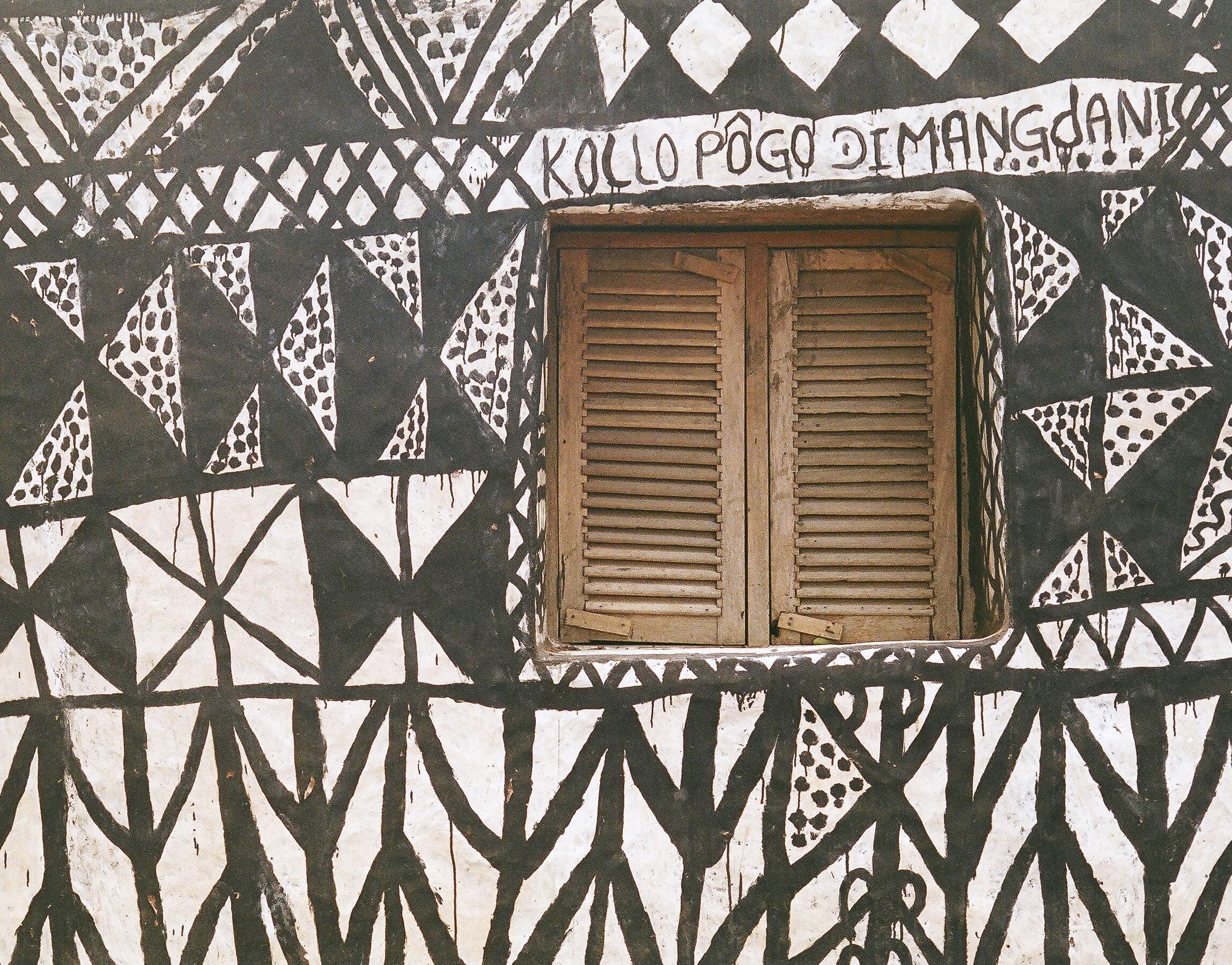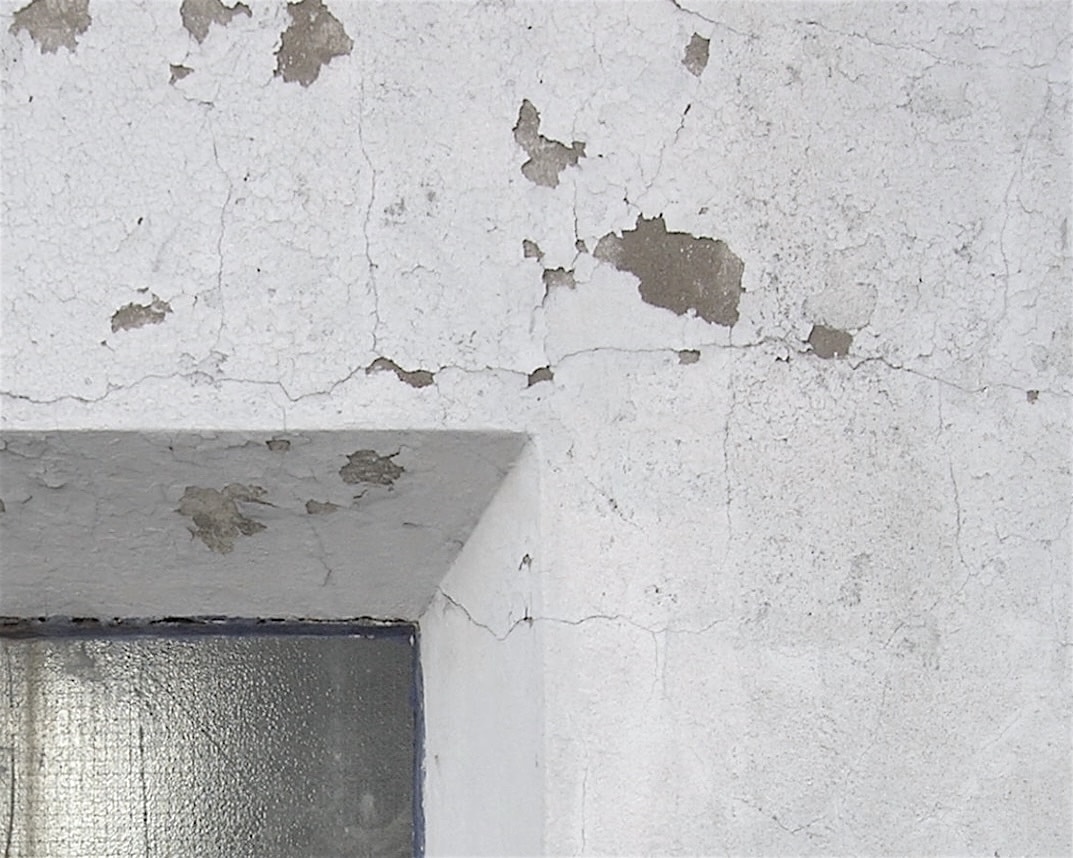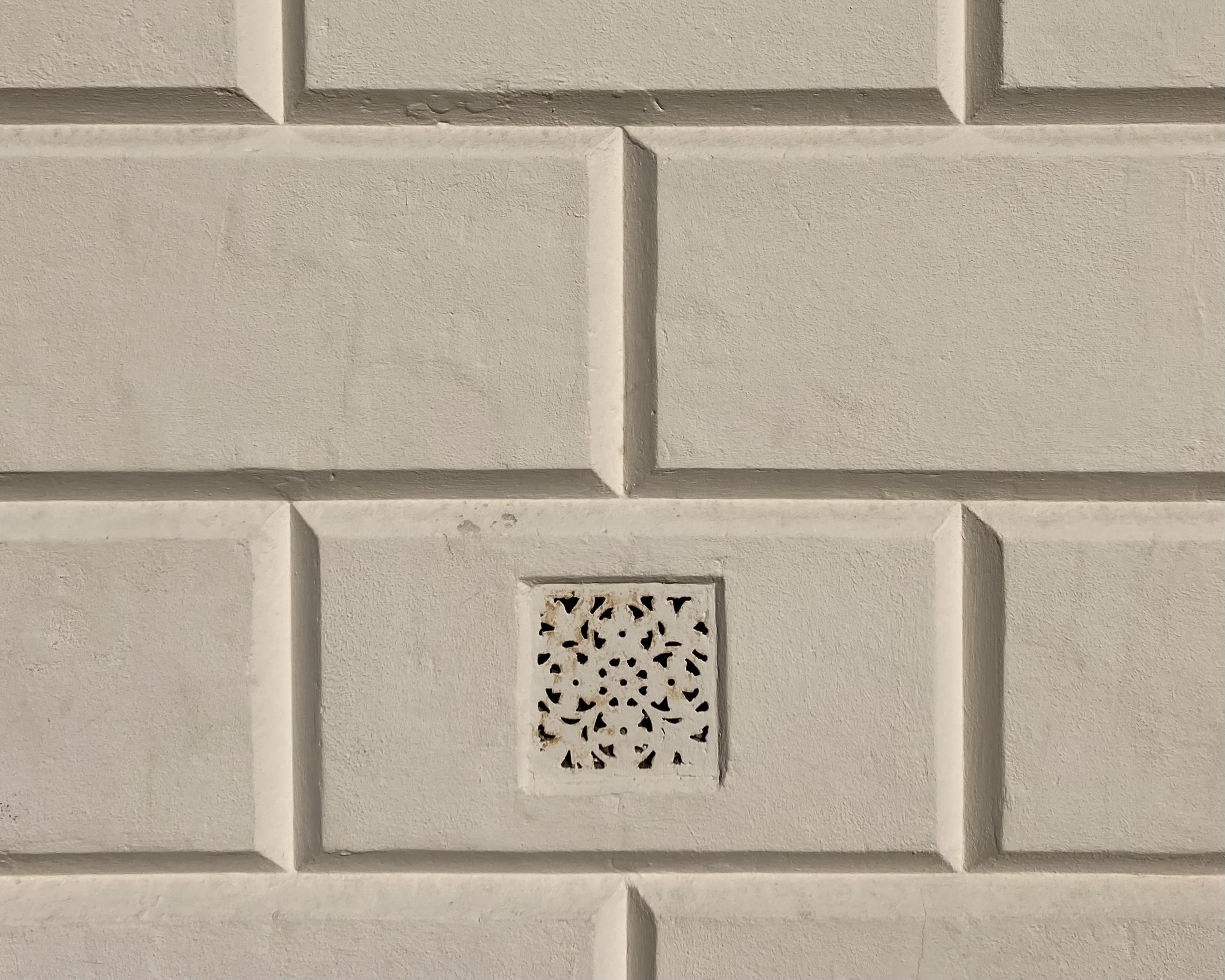Materia: Render
Render, a sticky viscous coloured slop traditionally applied by hand with a float, hawk and trowel to solid form, first as inchoate lumps, then smoothed down or mottled, to scatter particles of light in diffuse haphazard ways.
Inaugurated as the application of mere ground to wall, mud render allowed a homology of relations to pertain between the savage land and human built form, as flimsy woven wattle walls were covered with various mixtures of soil, clay, sand, straw and dung.
The desire within human constructive culture to apply coagulating liquid to built form instantiates both the potential for semiosis, as rendered blankness invites decoration and its ultimate negation, as a messy all too real lumpen materiality is transformed, as if by magic, into sheer plasticity.
The tradition of render as both artefact and practice may point therefore towards a locomotive drive, a tendency even, within constructive culture to veiling, to the production of a plane of expression that appears to float above the quotidian, as dictated by the sovereignty of gravity, solar rotation and the building materials we find close to hand.
The story of European architecture narrates render as the authentic expression of historically-mediated peasant cultural practice and as a neutral material plastic ground. Within the messianic rhetoric of early-twentieth-century Modernism for instance, render came to represent not just the rupture from and rejection of the immorality of late-nineteenth-century Classicism and its many ornate bedfellows. It also operated as a symbol, promoting the re-reading of rural cultural traditions as being the result of a simple spartan, proto-modernist utility, and not profoundly of extreme poverty and feudal class relations, which were simply whitewashed away.
The vernacular rendered building therefore inaugurates a form of the bourgeois gaze that seeks to reinforce the symbolic capital of savage authenticity whilst also valorising European high abstraction. This gaze posits rural forms of constructive practice as unmediated, primitive, simple, and pure, whilst at the same time regarding them as the ‘found’ foundation stone of a modernism that would seek to re-write the history of architecture as principally utilitarian, as the movement of function to form.
The immutable character of render as non-hierarchical – as rendered walls have no sense of up or down – has inevitably led to render being mobilised as neutral plastic ground, as if a veritable picture plane, a screen, even, inviting partisan projection.

In response to the screen-like character of the rendered wall, a variety of decorative practices have arisen within all human cultures to fill the perceived void. These practices include painting geometric or figurative forms on to the rendered surface and a grander universalistic metropolitan tradition, associated with the culture of neo-classicism and the architecture of the academy, which in an attempt to illustrate a culturally specific sense of ‘order’, incises within the rendered surface allusions to the foundational myth of the story of architecture as dictated by the axis-mundi of gravity and the perspicacity of proportion.
However, although a rendered surface can appear monolithic, clean, untouched, and pure, I am certain that this is an illusion. As I am also dimly aware that the all too apparent hygiene conveyed by a continuously smooth rendered wall masks a dirty secret, a permanent cloying stain, that will simply not go away. For under any same and infinite rendered surface lies the brute cold reality of human and geological time, sedimented through the sweat of coerced calloused hands, broken backs and the simple manner in which stone, brick, wood and wattle come to be, within the enclosures of gravity and the universal pull to ground that render simply covers over.


More recent developments of render technology, in a bid to improve render’s longevity, mix synthetic acrylic polymers with cement, sand, and lime to create a surface that has high water resistance, flexibility, adhesion, strength and deep continuous abstract colour.
Acrylic render can be successfully applied to all three dimensions: walls, ceiling and roof, metaphorically stretching to create one monolithic surface, which pushes the semiotics of render further towards the final encapsulation of the architectural object. Acrylic render performs, then, a role similar in some respects to the various forms of transparent polyethylene and polypropylene packaging that are used to keep consumer products fresh, safe and highly visible. But, in contrast, render seeks to make mute, to shroud, essentially to hide.
It is in this sense that contemporary forms of acrylic render effectively shrink-wrap tectonic form, embalming the architectural object within a gesture of maximal petrochemical asphyxiation, that although still breathing, may nevertheless represent the final death throes of what we understand by the word tecton.
The rise of hard liquid as the degree zero of architectural expression points towards a moment of space-time equivalence whereby the architectural object is eventually formed of one unit, one piece of information, one immaterial material. Such an object would reside and travel in space and through time as mere container, no longer inhibited, structured or proportioned in relation to worldly gravity as baukunst, but only to the multi-directional pull of planets alone.
The humble practice of daubing mud on a wall can be read as the beginnings of a millennial narrative arc that maps the gradual transformation of earthly material into synthetic immaterial form. This story reaches its climax only by the liberation of the architectural object from the archaism of the post and beam, as architecture finally assumes the form of the monocoque. This system of relations creates a mode of transference, whereby all friction, pressure, and impacts are smoothly distributed to each node within a network of structural equivalence, enabling force to be distributed evenly across a surface, in preparation for off-world adventures.
It is in this sense that the tradition of rendered archi-tecture leads inevitably to an exo-tecture: a tectonic honed for spatial exploration, signalling not an allegiance to this world, but an exodus from it, and all the heterogenous concerns that have created the sovereign and variously fetishistic traditions of earth-bound human habitat.
No longer worthy or desiring of the humble history of building, architecture fights to float free, to become external tec-ton, renamed for its new task as exo-ton.
We have learnt, however, through the centuries that all surfaces disassemble in a process similar to neurosis, whereby render degrades in an entropic language of falling shards, cracks and pitting to reveal what lies hidden and no doubt willingly repressed beneath.

This building may be bizarrely the most original rendered example of a Georgian building in London, as most Georgian buildings would have been re-rendered with concrete based and not lime based render sometime during their life.
This text is the first in a new series by Gordon Shrigley titled ‘Materia’ in which the architect meditates on the physical and semiotic nature of a number of everyday construction products. Forthcoming texts will include thoughts on corrugated metal, in-situ concrete, fired brick, plate glass and plastic.

– Gordon Shrigley